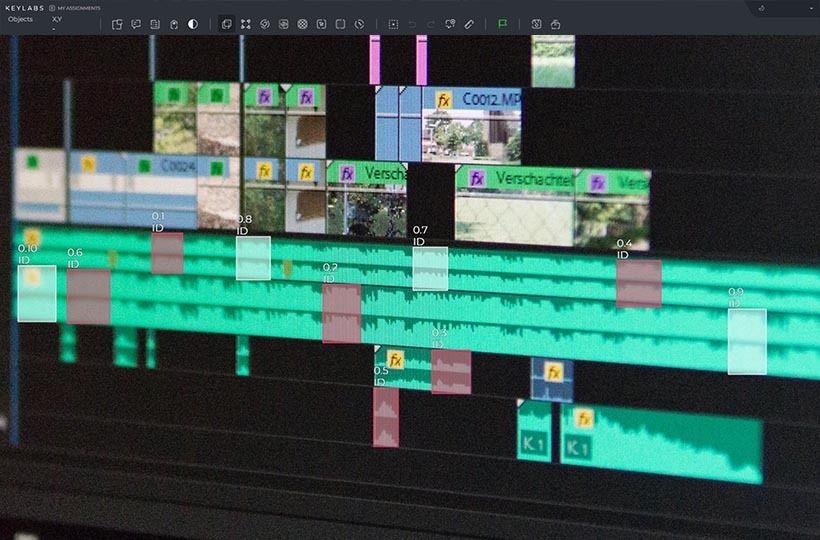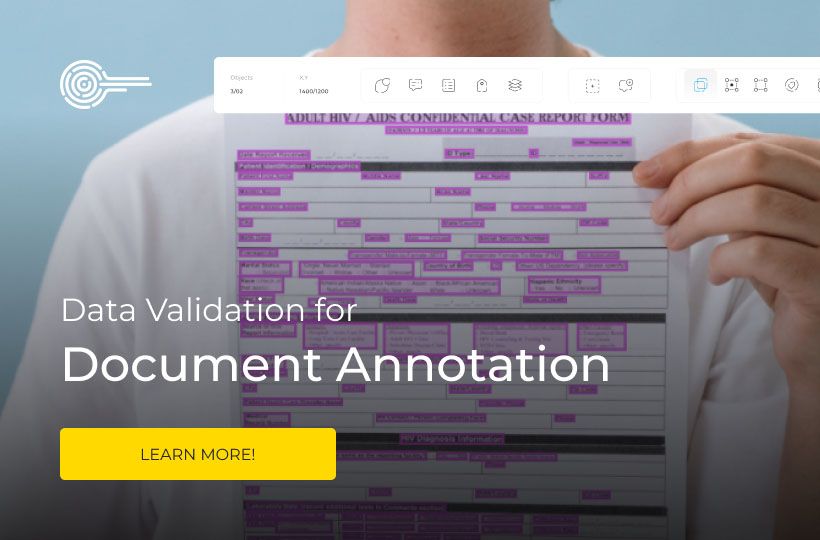Multimodal AI annotations
Multimodal AI is evolving on multidimensional training data, not isolated text or images
Modern AI systems need labeled datasets that reflect human perception. Combining images, audio, and text allows machines to interpret context like humans.
Most AI projects are stalled due to insufficient training data. Complex annotations transform raw input data into labeled data, the basis for healthcare diagnostics, supply chain automation, and more.
Quick Take
- Unimodal is obsolete as AI solves real-world scenarios that require cross-sensory analysis.
- High-quality labeled datasets reduce AI error rates in visual-audio-text applications.
- Context-aware predictions arise when systems process synchronized inputs from multiple data types.
- Companies that prioritize multimodal strategies have advantages in accuracy and operational efficiency.

What is multimodal annotation, and why is it important?
Multimodal annotation is a data markup process that processes multiple modalities: text, images, audio, video, or sensory data. Unlike unimodal annotation, which marks up a single type of content, multimodal annotation, also called cross-modal annotation, combines different sources of information to provide a deeper understanding of the context. It allows AI systems to "see," "hear," and "read" simultaneously, which is key to developing complex models, such as large multimodal models or multimodal perception systems.
Multimodal annotation is important because it provides a basis for training AI models to analyze complex scenarios where information is presented in different formats. For example, in autonomous transportation, models use video from cameras, LiDAR readings, and text descriptions of road signs. In medicine, multimodal data combines medical images, test results, and medical records for accurate diagnosis. Content analytics leverages vision-language models to recognize video emotions by analyzing facial expressions, voice, and text.
Therefore, multimodal annotations are the basis for creating systems that understand the world in a way close to human perception.

Multimodal annotation practices
Multimodal annotation practices encompass methods, approaches, and tools that accurately integrate data from different sources. The goal is to create consistent datasets that help AI models learn from context-rich information. Proper multimodal annotation requires synchronization of modalities, standardization of formats, and specialized interfaces for working with complex objects. Below is a table of the main multimodal annotation practices used in modern AI projects.
Using annotation tools and automation
Modern platforms combine machine efficiency with human judgment, creating training materials that help make complex decisions.
Integrating automated tools with human experience
Keymakr, a company specializing in creating training data for computer vision models, works with different types of markup. Keylabs's platform combines automated algorithms and annotator supervision, allowing for high quality, scalability, and accuracy.
How the integration of automation and human experience works
Automatic tools are used at the beginning of the process. The system pre-processes the image or video to speed up manual work.
Human verification and correction. Annotators check the automatic annotation. They review and correct automatic results and add details the algorithm may miss or misinterpret. Keymakr uses "4 levels of quality control" to thoroughly check each object and ensure a high-quality result.
Collaborative workflow (automation + human). The Keylabs platform provides a unified annotation interface designed for collaboration: automatic suggestions, tools for pre-labeling, and manual editing.The new version of Keylabs 2.0 integrates the SAM 2 model, which automatically segments objects. At the same time, the user can quickly adjust the result.
Scaling and adaptation to complex tasks. Keylabs has a solution that allows companies of any size to use automatic tools + human control to scale annotation.
So, integrating automated tools with human experience builds a complementary workflow, where automation takes on the routine and scalable part of the work and the human controls, details, corrections, and interventions where automation can cause errors or lose context. This approach allows you to create large, high-quality datasets for integrated AI systems.
Challenges and Solutions in Multimodal Workflows
Multimodal workflows face specific challenges related to processing different types of data. These challenges arise from the need to synchronize modalities, ensure quality annotation, scale work, and integrate automated tools with human expertise. Solving these challenges requires thoughtful strategies, a combination of technologies, and controlled processes that can improve efficiency and accuracy of results.
Building a Multimodal Annotation Pipeline
Building AI systems requires well-designed training frameworks. Let's examine the basic steps to building robust pipelines that handle diverse data streams.
Collect and prepare diverse datasets
Trusted sources are the foundation. Each dataset must undergo thorough cleaning to remove duplicates and irrelevant samples.
Normalization ensures consistency across formats. Audio files are given standardized sample rates, and images are resized to the same size. Synchronization aligns timestamps between video frames and their corresponding transcripts, which is important for applications like emergency response analysis.
Implement quality control and active learning
The quality assurance process begins with cross-validation. Text descriptions must match visual elements in the product catalog datasets. Three expert annotators review edge cases and reach consensus using structured discussion protocols.
Machine learning models label uncertain predictions for human validation. This active learning strategy prioritizes ambiguous street scenes for autonomous vehicles or nuanced medical imaging cases. The system learns from the corrected labels, creating a continuous improvement cycle.
FAQ
Why is combining vision, text, and audio important for AI training?
Combining vision, text, and audio enables multimodal learning, allowing AI to learn from multi-contextual data, bringing its perception closer to human-like and improving the accuracy of predictions and recognition.
How do mixed data labeling tasks differ from single-modality workflows?
Mixed data labeling tasks require the simultaneous combination and reconciliation of different types of information, while single-modality workflows require labeling a single kind of data.
Which industries benefit from cross-modal AI systems?
Cross-modal AI systems simultaneously benefit industries that process text, images, audio, and video, including medicine, autonomous transportation, entertainment, security, and marketing.
What are the metrics that ensure quality in multi-format datasets?
Quality in multi-format datasets is ensured by metrics of annotation accuracy, consistency across modalities, completeness of data coverage, and reproducibility of results.
